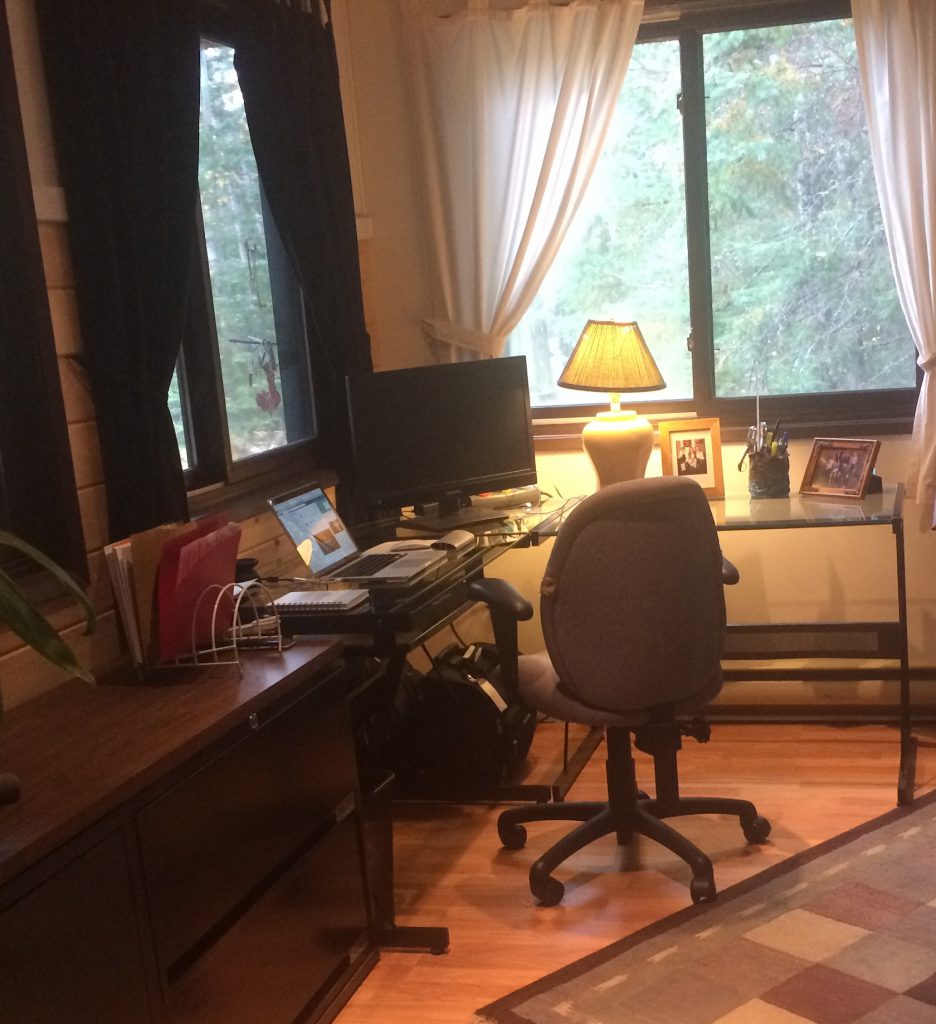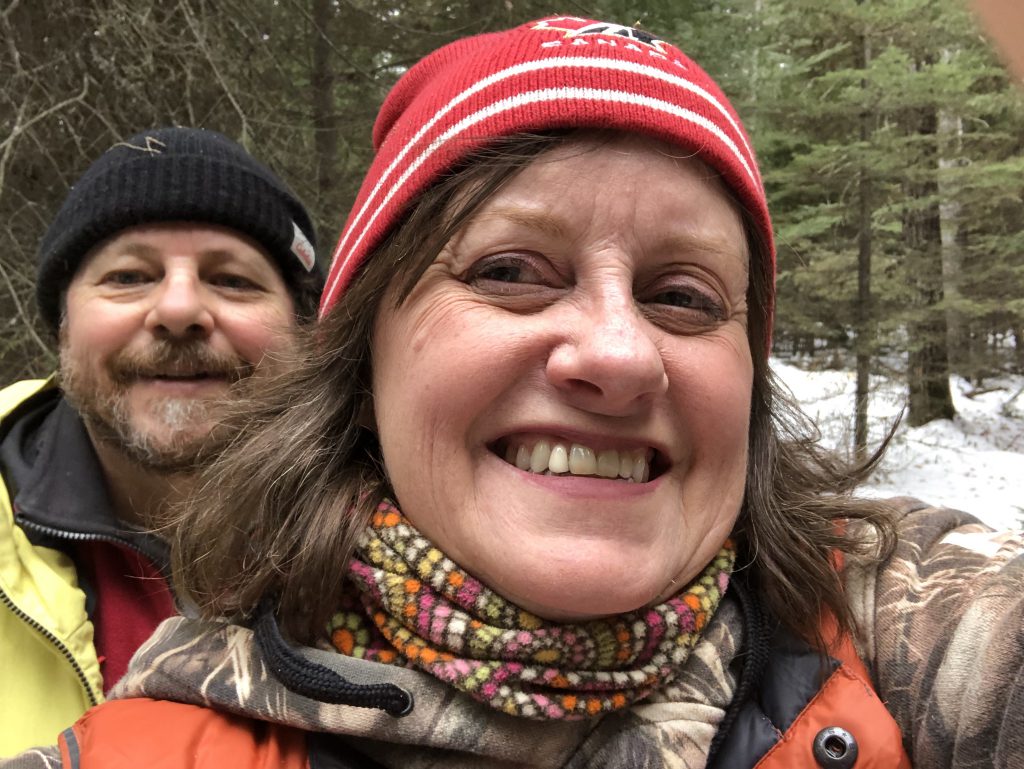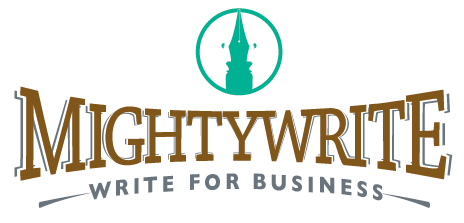I live and work remotely; the latter for most of my career. I thought I would share some of the things I have always done to thrive in times when I’ve felt isolated. Due to my lifestyle, I am more removed from COVID-19 than most people. But this hasn’t stopped me from worrying constantly about my family and other loved ones who aren’t as lucky as me.
I am not in your shoes so can only guess at how you are being affected by world and local events right now. This post is my way of doing what I can to help.
Drawing on our strengths
Many of us are having strong reactions to the news and what we’re seeing on social media. I decided I had to do something so that I could respond from a place of strength rather than panic. I’ve done the Via Institute’s Character Strengths survey every year for the past five years. Via describes character strengths as “the positive parts of your personality that impact how you think, feel and behave.” Scientists have identified 24 character strengths that we have the capacity to express. Evidence shows that knowing and applying our highest character strengths can help us be our best selves. I think we can all benefit from having the latest information to consider why we’re reacting the way we are. Click the Via link above if you’d like to do the survey.
This time I saw some interesting and perhaps not so surprising results. Perseverance, which has been my top strength in the past actually dropped to #17. When I thought about it, I realized that since much of what is happening is beyond my control, focusing on pushing through obstacles may not be the best strategy. Instead, I’ll do better both mentally and physically to draw on other top strengths such as love, perspective, social intelligence, appreciation of beauty and forgiveness.

These are my results but they may help you as well. Love and perspective can assist us in providing counsel to others, to listen to their worries and fears without judgement, and to help them come up with solutions that best fit their situation. Social intelligence guides us in understanding the feelings of others who may have different concerns, beliefs or values than ours (that’s perspective too!). Appreciation of beauty helps bring calm and hopefulness into days that otherwise feel bleak and hopeless. YouTube has some great nature and other therapeutic videos. Music sites can also help soothe the soul. Check out these virtual museum tours.
On the point of forgiveness, I think that’s something we’re all going to need to find and practice – whether it’s because we’re cooped up at home with other family members, angry at those we feel are responsible for this disruption in our lives, or frustrated at the actions of government or other leaders. What’s happening in the world right now is a first for most of us, and it’s changing by the minute. We all have a lot to learn and some of us may screw up on occasion. Hopefully, forgiveness and love prevails.
Here’s a great exercise. Via suggests that we think of a specific time when we were at our best, when we felt we were functioning at a high level. What strengths were we using and how did they contribute to the positive experience? Such thoughts can positively impact happiness – something we’re all going to need in the days ahead.
Staying connected during isolation
Whether you’re choosing self-isolation or social distancing, it’s likely that you’re feeling more disconnected than normal – which can be unsettling. There are things I have always done to reduce feeling sequestered since I live outside town, don’t have any neighbours nearby, and work by myself most of the time.
For now, I’ll be foregoing my weekly networking breakfast and reducing face to face client meetings. My writer’s group is also on hiatus as are all of the business and community organizations I count on for outside connection. Restaurants, museums, churches and all other non-essential services are closed for now here in Ontario. So what to do? Skype and Zoom are handy ways to face-connect with people even when phone calls might do. Sending clients an email just to let them know you’re thinking of them and to see if there’s anything you can do to help them get through this is another idea. I’ve made a point of checking in with both my children every day – 1 a few hours’ drive away, the other on the other side of the country. I’m careful that they don’t hear my distress but rather my calmness and wisdom (I hope) to help guide them through this. I’ve done the same with my elderly parents, although I’ve had to be a little more forceful with my fiesty mother!
If you’re working at home or even if you’re doing art projects or other types of interests, create space where you can flourish. If you can avoid it, make sure it isn’t a corner of the kitchen table. For me, it’s a lovely spot with windows facing the trees. I have a laptop so this means I can move around my home office, perhaps sitting in front of the wood stove fire or closer to a window when the sun is shining. This is infinitely more appealing than staying deadlocked at the desk all day. While you might be feeling isolated, nothing is stopping you from moving around, or stepping outside the house in your yard, out onto your deck or as one of my colleagues does, burning up the floor (and a few calories) pacing while you’re on the phone.

I have always run my day like a workday, even though no one actually knows what I’m doing most of the time. I set blocks to work on one project at a time. Multi-tasking is hugely unproductive so reduce distractions like social media and email and leave the laundry or vacuuming until the end of the work day. The great thing about working at home is you get to set your own schedule. While this may include regular check-ins with other team members, hold sacred pockets of time that work best for certain tasks. My most productive writing time is in the morning and I actually (usually) look forward to getting to work super early to bask in the quiet of the dawning day. I do most of my telephone interviews and meetings mid-day and wrap up the day with setting up appointments, which for now, are mostly virtual.
You may want to use this closed in time to do a technology check, clean up your email and hard drive, check that your social media profiles are all up to date, and ensure you have the data you need to work efficiently from home. Most data plans are unlimited but if you’re in the country like me that’s not always the case and an upgrade may be needed to run Zoom, YouTube videos, etc. I look at this as the cost of staying productive and well and don’t sweat it if I have to buy more data to get through an especially busy month.

Buy and brew good coffee, or tea – you deserve it! Also drink lots of water throughout the day to stay energized.
Have some exercise and relaxation rituals. One of the problems of working from home is that your work is always just a keyboard away. Building downtime into your day is a must! Don’t feel guilty. There are many free online workouts that are a great way to start the day. While it can sometimes be hard to get started, once you do you’ll see how taking 30 to 45 minutes to stretch, do some yoga or weights can add energy and focus to your day. A power walk in the afternoon – even if it’s just up and down the stairs – can give you that boost to get you through the rest of the day. Take a 15 minute “out of office” nap if you need. It’s allowed! Who knew?

Find some time in nature. I know that not everyone is blessed to live in the forest like I do, but a break outside in your own back yard or a nearby park can lift your spirits and is known to reduce depression. I wrote about how nature is a cure for many things here. I realize that nature is not universally accessible and the article provides a few alternatives for that too.
Find your tribe, take some online classes. One of my writing mentors and pals, author Lauren Carter, hosts daily write-ins on Facebook, which I expect will be a lifesaver for me in the coming weeks. Online webinars are also great for learning new things and for the interactions that occur through the live chats and social media. You feel heard when the facilitator acknowledges you by answering one of your questions or responding to a chat comment. Chris Brogan at Owner Media and Joanna Wiebe at Copyhackers are a couple of my favourites. CreativeLive and Masterclass are online education platforms that feature some amazing sessions on a wide variety of topics. These aren’t all free but worth every penny when they can lift you out of feeling disassociated and help you discover something new and exciting.
Make a meal from start to finish. What you ask? You may have more time in the coming weeks. I love to cook and I know that isn’t for everyone but go ahead, type in the ingredients you have in the house and you’ll be surprised at the great, easy to prepare recipes you’ll find. I’ve included one of my favourite home-made cracker recipes below. They are del-ish and I’m sure gluten-free and dairy free alternatives could be used. Try them with some homemade hummus or whatever ingredients you have! If your family doesn’t usually sit down for a meal together, this may be the time to start. Even though it’s just my partner and I, shutting down the “office” to prepare delicious, healthy meals that are as beautiful as they are tasty is a great way to end the day.
Reach out to friends and colleagues. This may seem like a no-brainer but drawing on strengths like perspective can help us understand that we never know what others are going through. Ask how are you doing? Listen without judgement or opinion. Discuss but don’t diagnose. And be honest if you are feeling blue or lonely. This is not the time for the standard “I’m fine.” If you’re not, let someone know. Ask for help and watch for cues that others need your help as well. Call or video connect with someone with whom you have memories that only the two of you share. With many of my friends and relatives, this usually involves full-on belly laughs and a sharing of stories that are the best medicine.
Get the facts. Information about COVID-19 is changing day by day and hour by hour, which is confusing and again, overwhelming for some of us. I personally am limiting my time on social media and turning instead to media sources I trust like CBC, Maclean’s and the Globe and Mail (Canada). Hopefully, they’ll continue to care about the truth.
I hope a few of my suggestions can help you get through the days ahead feeling less isolated.
You are not alone.

Here’s some more reading that may help:
Coronavirus Coping: 6 Ways Your Strengths Will Help You
Coronavirus in Canada: how to get tested, what the symptoms are, where to get help
Nature as a Cure Most of us already know that time in nature is good for us. But do we really know just how good?
Some of the ideas above are adapted from and shared with credit to Chris Brogan.
Cheddar Crackers
¾ cup flour (could use whole wheat)
¼ tbsp cornmeal
¼ tsp salt
¼ cup grated butter (mix dry ingredients first)
Mix all then add:
1 cup grated old cheddar
4 tbsp water
(Can use handmixer)
Dough is ready when it forms a ball
Roll, flatten as thin as possible
Trim edges and make square; cut into 2” squares
Beat eggs with a little water
Dot dough with a fork
Brush with egg mixture
Sprinkle with sesame seeds
Lift onto pan (I use a small square spatula)
Bake for about 13 minutes at 400 degrees.

